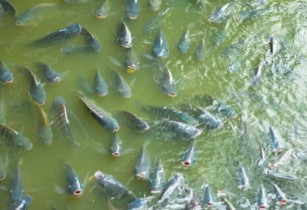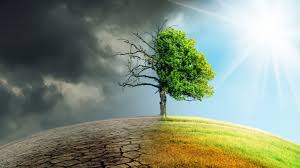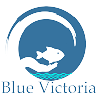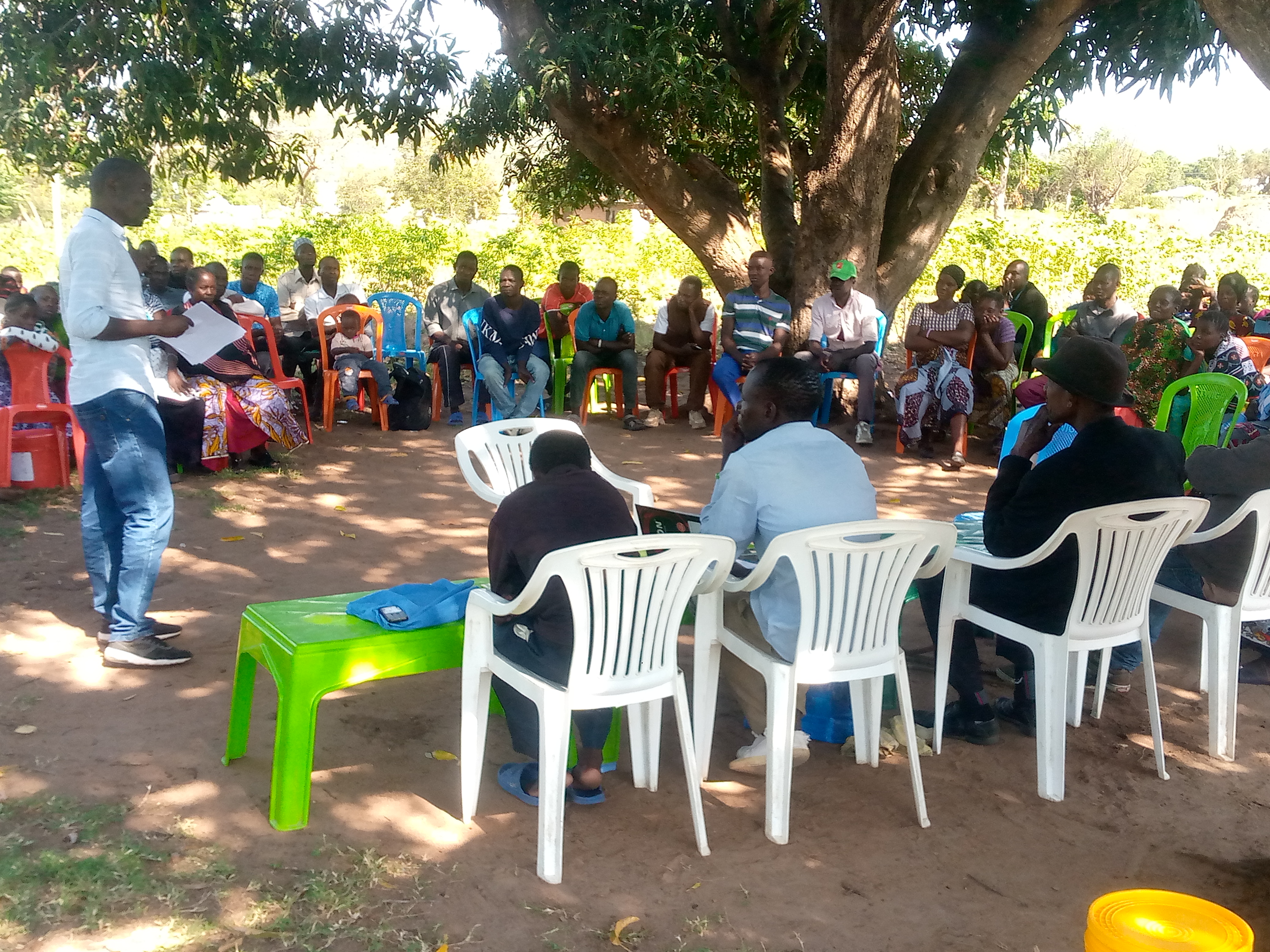
May 05, 2023 By Adm
Proposing Freshwater CCA - Mara Bay KBA
My name is Festus Massaho; I was born and grew up in Kibuyi village found in Mara Bay alongside Lake Victoria in Mara Tanzania. Fishing was a livelihood activity. Currently fisher men and women across all ageas in my community do not get enough fishes. The situation is getting worse as years go by. In its official study, IUCN reported that there is continuous decline of fish species in Lake Victoria and the risk of species extinction is higher. As this activity is close to my heart, I established Blue Victoria Organization to respond to this alarming situation as an attempt toaddress the same. The Organization works in freshwater biodiversity conservation, fisheries and aquaculture, climate change and knowledge bank. Kindly join me in setting up and managing Community Conservation Area s in Lake Victoria for freshwater biodiversity conservation.
Mara Bay
Mara Bay Key Biodiversity Area (KBA)
is a vital ecological and cultural hub located within the Lake Victoria Basin in Tanzania. It encompasses a unique freshwater ecosystem
that supports a diverse array of plant and animal species. The bay's significance is not only ecological but also cultural, as it holds
deep-rooted connections to local communities who depend on its resources for their livelihoods and cultural practices. Mara Bay was
recognized as a Key Biodiversity Area by the International Union for Conservation of Nature (IUCN) due to its role as a refuge site
for endangered fish species and its importance for freshwater biodiversity conservation.
The bay serves as a critical habitat for several endangered fish species, including the Labeo victorianus,
Oreochromis esculentus, and Oreochromis variabilis. These species are integral to the local biodiversity and
ecological balance of the region. However, the bay faces multiple challenges such as overfishing, habitat
degradation, and invasive species, threatening the survival of these valuable aquatic organisms.
The bay is situated at the entrance to Musoma town and harbour on the eastern shore of Lake Victoria. At the eastern edge of the
bay is the mouth of the Mara river, backed by Masirori swamp, an extensive area of papyrus Cyperus papyrus. The shore in this
area of the lake is generally well-settled with little natural vegetation.
Despite the importance of this bay, there are a number of destruction activities of natural vegetation found in the bay.This includes mass burns of the wetlands, illegal fishing methods i.e. bottom trawling, using chemicals that are poison, using mpuku ( a local tool made to produce sounds in water which cause fish to run towards the fishing nets), and using prohibited fishing nets. This has led to massive decrease of freshwater biodiversity in the lake.
Google settelite image of Mara bay
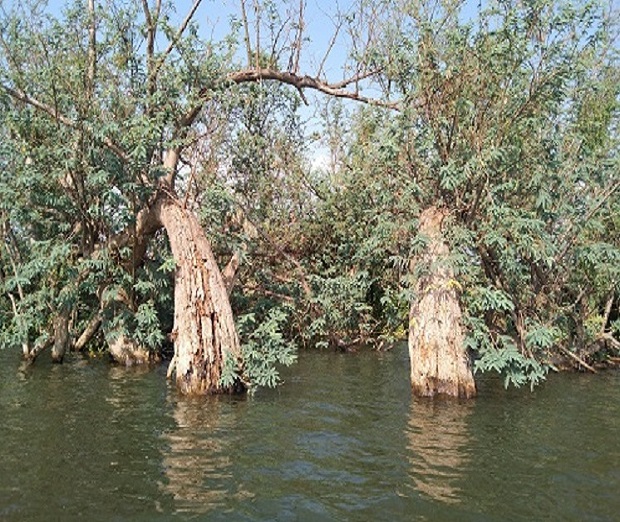
Aquatic plants in Mara bay
Freshwater Biodiversity in Mara Bay
Fish species are declining in the bay and in the Lake Victoria basin. In a very rare occusions, fish species like carpfish, trunkfish, pangasius,bagrus ( and other fishes known in local names as soga, mbofu, and ngere) can be found as it used to be thus making the risk of extinction REAL.The ongoing decline in freshwater biodiversity is impacting livelihoods of the rural poor in the bay mentioned above. Freshwaterfishes are particularly important for provision of food (human and animal), and the Lake Victoria fishing supports household livelihoods of millions of people in the basin. Freshwater plants have diverse uses, including for medicine,food, construction and handicrafts. Thy constitute an important resource, since many communities either lack accessto or cannot afford market goods. Todate, the IUCN report has shown that 22.6 % of fishes in the lake has been classified as Critical Endangered (CR), 1.7% Endangered (EN), 1.3% Vulnerable (VU), 12.42% Near Threatened (NT), 33.3% Data Deficiency, 28.2% Least Concern (LC), and 0.4% Extinction (EX)
Ethnic Community living in Mara bay
Community in Mara bay has been divided into seven clans groups, which are Abhasubha, Abhakitaga, Abhanyambwe, Abhakanyama, Abharyaga, Abharimba, and Abhatunda. Each clan has its leadership. They meet together each monthly since time in memorial, a practice they inherited from their ancestors. In their meetings they discuss issues related to development including economic development for individuals, ceremonial issues such as initiation rites, and punishmentcommunity members for any misconduct.
Community Conservation Area (CCA).
Community Conserved Areas (CCAs), or community conserved territories and areas, are spaces de facto governed by local communities with evidently positive outcomes for the conservation of biological and cultural diversity. In CCAs, people engage in the continuation, revival or modification oftraditional practices in protecting and restoring natural resources and cultural values in the face of new threats or opportunities. The CCA consortium as provided by three characteristics for identifying CCA; • There is a closed and deep connection between a territory or area and indigenous people or local community. This relationship is generally embedded in history, social and cultural identity, spirituality and / or people’s reliance on the territory for their material and non material wellbeing. • The custodian people or community makes and enforces decisions and rules (eg access and use) about the territory, area or species’ habitat through a functioning institution. • The governance decision and management efforts of the concerned people or community contribute to conservation of nature (ecosystem, habitats, species, natural resource), as well as to community wellbeing.
Establishing CCA in Mara bay
In introducing CCA concept in Kibuyi village found in Mara Bay, Mr Festus Massaho, a Co founder and Executive Director of Blue Victoria met with his clan Abhasubha in one of their monthly meeting. Mr. Massaho introduced an idea of conserving the bay. He explained why fishes are not found easily in the bay. He provided few copy of a scientific report produced by IUCN (is in Swahili version) which had very detailed information on the status of fishing in the Lake Victoria basin and its negative outcome as far as decline fish species in the lake and its warning for species extinction if no any measures to conserve them is not done timely.
Members of the meeting were exited with the idea and were willing to take measures necessary to conserve their bay. One of clan member Mzee Bilingi said “Our son brought to us a useful idea for our resources, we all knows that our life depend on fishing. The fact that fishes are vanishing is indeed a bad thing, the only choice we have is to go with our son’s idea”.
In order to get a buy in in the whole area, this idea need to be introduced in all seven clans group of Kibuyi village.
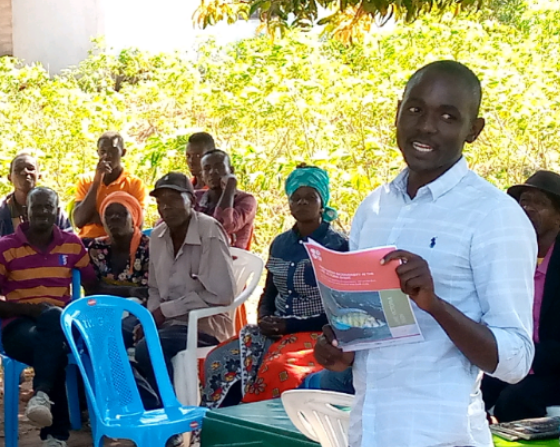
Mr. Massaho showing his clan group IUCN report
Contact us through;Email: bluevictoriatz@gmail.com
Whatssap/Call: +255 759 682 826
